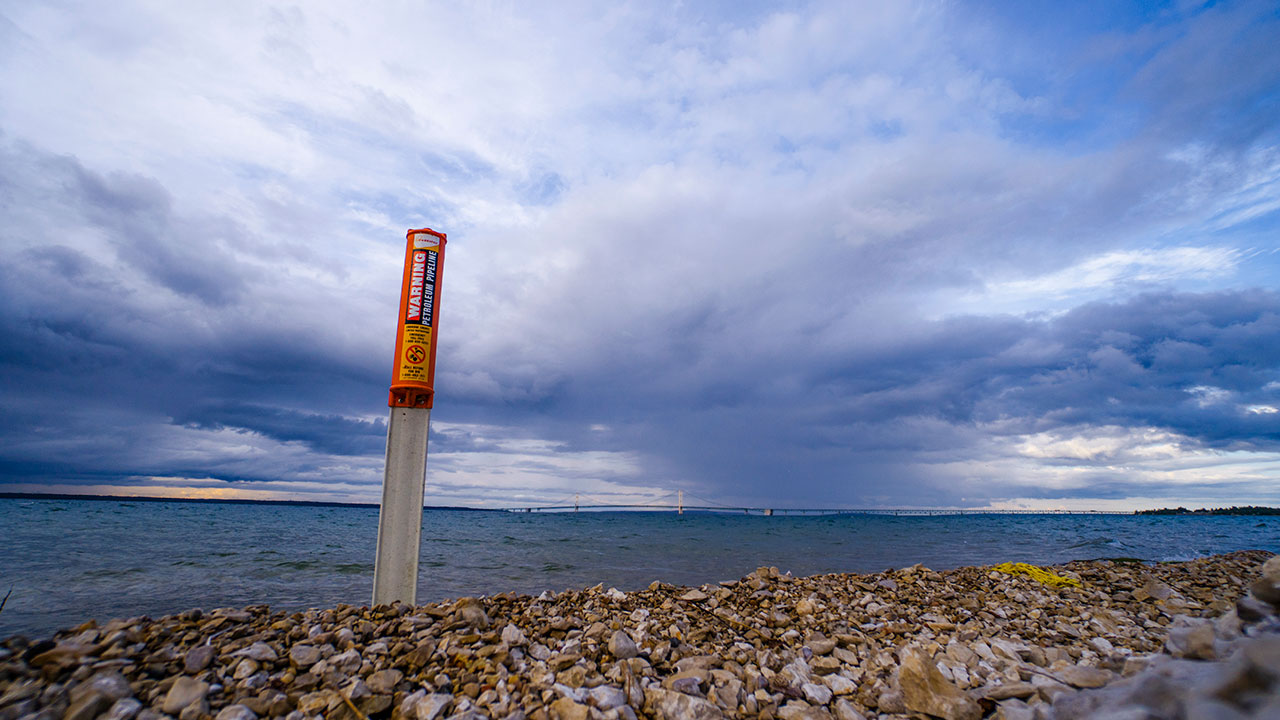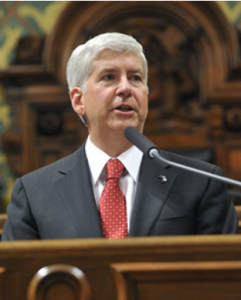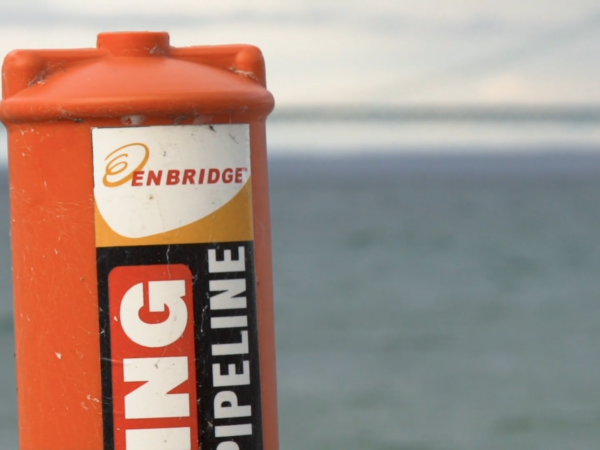
Economic Impact, Natural Resources Damage

Liz Kirkwood, Executive Director of FLOW, courtesy of flowforwater.org
The organization called FLOW (For Love of Water) commissioned the study. FLOW’s Executive Director Liz Kirkwood says, “The recent anchor strike from Line 5 should be a wake-up call that this crippling blow to our tourism economy is not hypothetical. It is real and could happen at any time.”
FLOW, based in Traverse City, is advocating for the shutdown and decommissioning of the 65- year old pipeline that runs between the Upper and Lower Peninsula of Michigan.
Dr. Robert Richardson at Michigan State University who authored the study calls the potential scenario on which he based his research “conservative.”
We posted his study last week on Great Lakes Now social media and since that time have been gathering reaction from other organizations as well as from Enbridge, and talking with Dr. Richardson in-depth about the study.

Dr. Robert B. Richardson PhD, Photo by msu.edu
Dr. Richardson is an associate professor in the Department of Community Sustainability at Michigan State University, a former member of the Board of Scientific Counselors of the U.S. Environmental Protection Agency, and former chairperson of the subcommittee on Sustainable and Healthy Communities. He is a former officer and board member of the U.S. Society for Ecological Economics and a member of the International Society for Ecological Economics. His work has been published in Ecological Economics, Environment and Development Economics, and World Development.
Some environmental organizations tell Great Lakes Now the amount Dr. Richardson came up with for the economic impact of a spill from Enbridge’s Line 5 pipeline in the Straits of Mackinac is too small. Most did not want to comment until they spend more time examining the research.
The 4.5 mile long Line 5 pipeline in the Straits of Mackinac carries 23 million gallons of oil and natural gas each day.
This new study uses the framework of a hypothetical scenario involving a major spill of approximately 2,500,000 (two million five hundred thousand) gallons of crude oil.
The scenario involves damages to 900 miles of shoreline across Charlevoix, Cheboygan, Emmet, Mackinac and Presque Isle counties, as well as Alcona, Alpena, Antrim, Benzie, Chippewa, Delta, Grand Traverse, Iosco, Leelanau and Schoolcraft Counties.
Dr. Richardson bases his assumptions on scenarios related to the vulnerability of the pipelines to damage from events such as an anchor strike, a failure of the automatic response valves, and a delay in human response of up to two hours.
We talked with Dr. Richardson via Skype:
Dr. Richardson points out that the study is based on a 2-hour delay in response – much shorter than the 17 hour delay in response which occurred after an Enbridge pipeline ruptured along the Kalamazoo, River in 2010, spilling one million gallons of oil and creating the worst inland oil spill in U.S. history.
The breakdown goes like this: the study estimates $697.5 million in costs for natural resource damages and restoration and more than $5.6 billion in total economic impacts, including $4.8 billion in economic impacts to the tourism economy; $61 million in economic impacts to commercial fishing; $233 million in economic impacts to municipal water systems, and over $485 million in economic impacts to coastal property values.
Dr. Richardson says what he couldn’t measure as far as impact from an oil spill from the Line 5 pipeline: long term public health effects, long term effects on fish and wildlife, and long term effects on municipal water systems.

Enbridge spokesperson Ryan Duffy, Photo by Great Lakes Bureau
We reached out to Enbridge to get the company’s reaction to the study.
Enbridge’s Ryan Duffy tells Great Lakes Now, “This FLOW-funded study is fundamentally flawed; it is based on an unrealistic volume of product potentially released. Enbridge has done extensive safety and risk planning on Line 5. We use worst-case scenarios with realistic numbers to identify and develop the various safety measures installed along the line.”
Duffy says, “Our analysis indicates a potential worst case discharge at the Straits of Mackinac is approximately 5,000 barrels, which is less than one-tenth the volume assumed in this study. Automatic shut-off valves located on either side of the Straits of Mackinac will shut down flow of product into the line within minutes if there is a drop in pressure. We would immediately activate containment and clean up equipment and crews.”
Duffy adds, “We appreciate and respect the efforts of all parties who are looking out for the best interest of the Great Lakes and we continually look for ways to make a safe pipeline safer. Working through risk scenarios, as we are doing in partnership with state and federal regulators, is certainly part of that work.“
Great Lakes Now asked Governor Snyder to comment on Dr. Richardson’s research on the economic cost of a Line 5 oil spill in the Straits of Mackinac. Here’s a statement from his office:

Michigan Governor Rick Snyder
“The governor has expressed the need for the highest level of environmental safety standards to protect Michigan’s waterways. In August, the state expects a Line 5 Risk Analysis, being led by Dr. Guy Meadows of Michigan Technological University, to provide key findings that, taken into account with the completed Alternatives Analysis and all other findings, will help the state to make an informed, transparent decision on the way forward on Line 5. The governor has also requested Enbridge Energy Partners to accelerate studies that look at anchor strike mitigation measures and the potential for tunneling under the Straits, as well as asked Enbridge to engage with other companies that have infrastructure in the Straits for assistance with the studies and identifying potential solutions.”
You can see Dr. Richardson’s entire study here: For Love of Water
(Editors note: For more information about the Line 5 pipeline, watch our documentary “Beneath the Surface: The Line 5 Pipeline in the Great Lakes“)
2 Comments
-
realistic spill volumes with a worst case spill is an oxymorom. another anchor drag in bad weather ruptures both pipes during yet another michigan blizzard. blizzard knocks out local power grid.. blizzard keeps an already weak and nearly useless clean up effort off the ice and high waves (if there are any) for 4-5 days. now that’s a worst case.
-
>>>>>The 4.5 mile long Line 5 pipeline in the Straits of Mackinac carries 23 million gallons of oil and natural gas each day.
Line 5 does NOT carry any natural gas and has never carried any natural gas. It does carry natural gas liquids which are light liquid hydrocarbon compounds derived from natural gas extraction wells and gas processing plants. Natural gas liquids are NOT liquefied natural gas.




